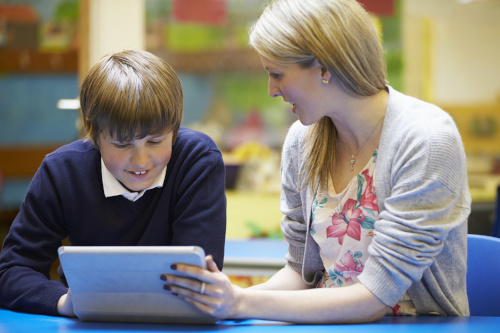At Rockford Public Schools, we have a strong commitment to literacy growth. We take a comprehensive approach beginning with our foundational curriculum.
Foundational literacy instruction accounts for 50 minutes of the literacy framework; this includes up to 30 minutes for core instruction and 20 minutes engaged in the aligned software. Extended transfer beyond the Daily Core 4 is embedded within the framework as well. Other components of the RPS literacy framework include Integrated Literacy which integrates English language arts standards, Next Generation Science Standards, C3 standards, and some health standards. The elementary schools use Units of Study Writing as the core writing resource aligned to standards.
Our students spend about 210 to 220 minutes per day in the area of literacy instruction and practice. One area we’ve recently been working on improving is the consistency of language and approach when it comes to explicit phonics instruction and the science of reading. We have a number of students with gaps in literacy. It is imperative that all of our teachers, instructional coaches , and administrators share a common language and instructional practices to support all students in the area of literacy.
With approximately 29,000 students and 42 schools, including 21 elementary schools, special program schools, and four early childhood centers, Rockford Public Schools is quite large, so implementing changes takes a lot of time. I have learned how important it is to ensure teachers understand the reasons behind instructional shifts so that they are fully invested in using effective resources and practices.
Aligning on the ‘why’
To offer students explicit and systematic phonics instruction and practice—and to ensure the approach and language we used to deliver it was consistent across grade levels and schools—we implemented Reading Horizons Discovery in kindergarten through second grade in 2017; many third grade classrooms opted to implement the program as well. Since the original roll-out of the program, much research in the science of reading has confirmed that this program aligns to best practices in phonics instruction.
- Are substitutes the answer to the teacher shortage? - June 13, 2023
- Preparing for ransomware attacks begins with education - June 13, 2023
- How to use UDL-inspired technology to reengage students - June 12, 2023

